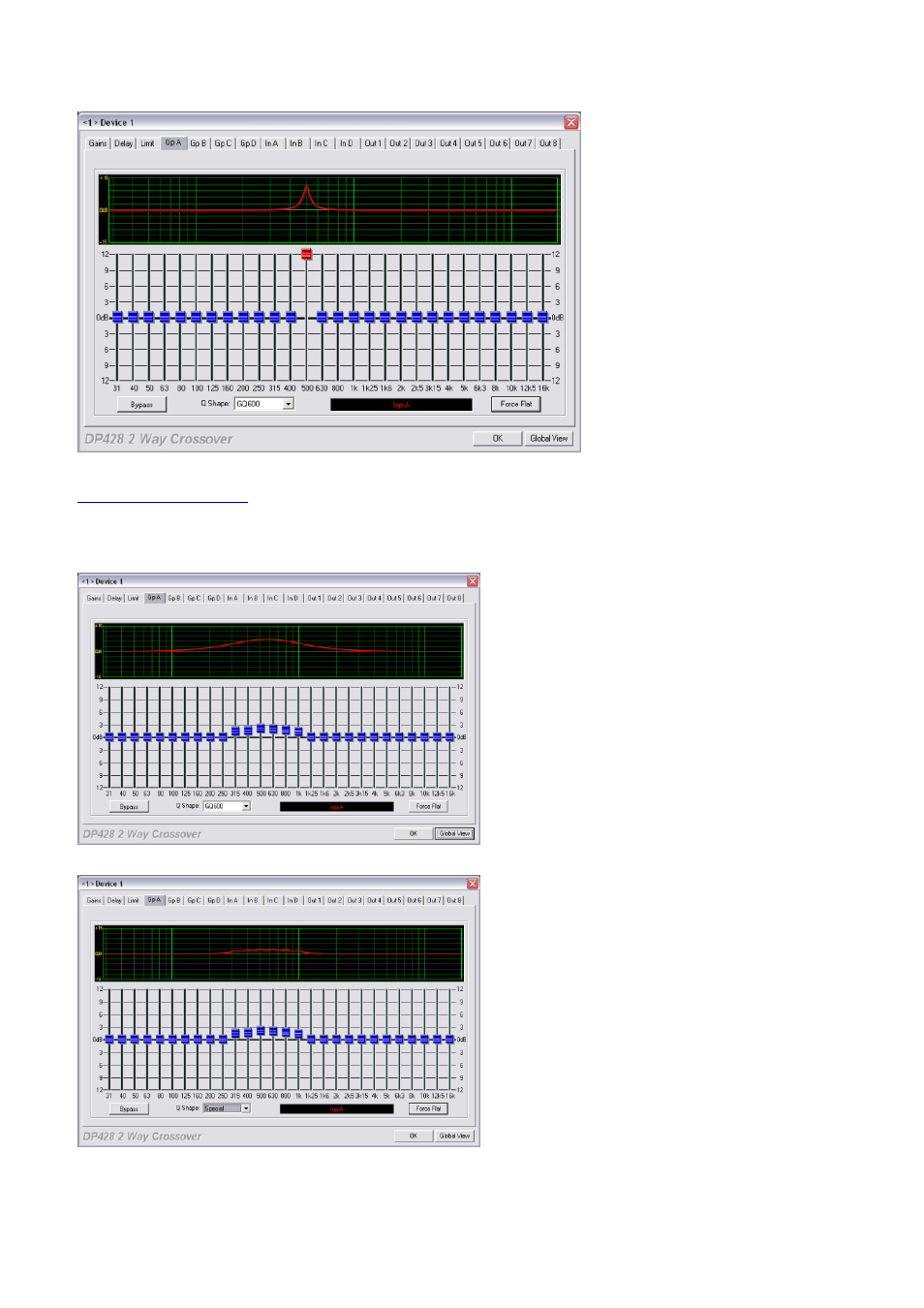The “special” behaviour – XTA 5 Series User Manual
Page 43

✁
✂
✄
☎
✂
✆
✁
✂
✄
☎
✂
✆
✁
✂
✄
☎
✂
✆
✁
✂
✄
☎
✂
✆
Operator’s Manual
Page 43
When the band is boosted to its
maximum value, it can be seen that the
response has become quite narrow.
This is useful when cutting bands (for
example to remove troublesome
feedback resonances) as it has less
effect on the surrounding areas.
The “Special” behaviour
The “Special” behaviour is designed to offer a more constant ‘Q’ type response, which means there is less variation of the
filter bandwidth at different cut/boost levels. This leads to a more “rippled” response at low values of cut/boost, but is also
less “peaky” when high levels of boost are applied ensuring the flattest response when adjacent faders are adjusted.
Consider the group of faders gently boosted as shown
below, with the “GQ600” behaviour selected. As can
be seen, the filters’ responses have combined to give a
smooth lift in response across the entire region. The
overall level is considerably higher than the individual
amount of boost applied to any single band.
The same bands have been boosted in the example
below this, but the behaviour has been set to “Special”.
The ripple in between bands is now obvious, due to the
bandwidth not having widened at low level boosts.
However, the overall level is much closer to the highest
maximum filter’s boost.
